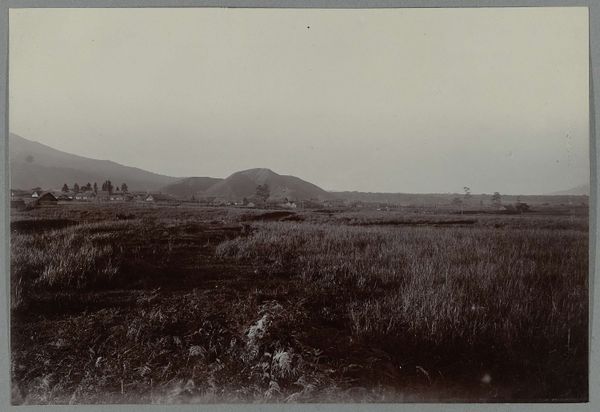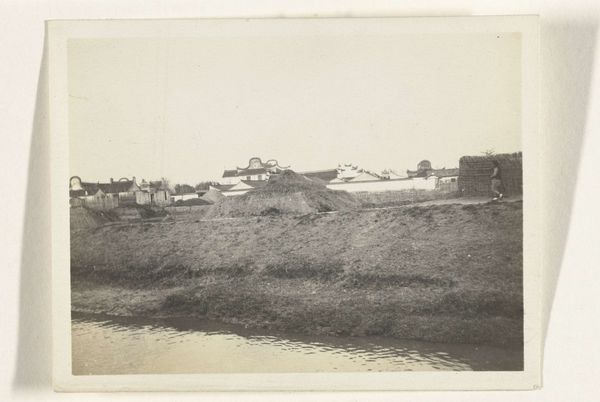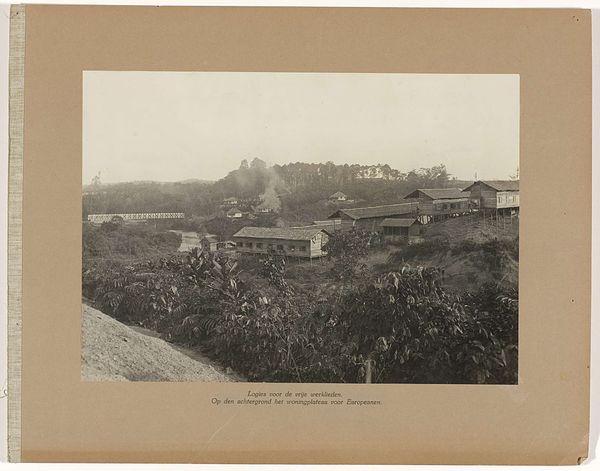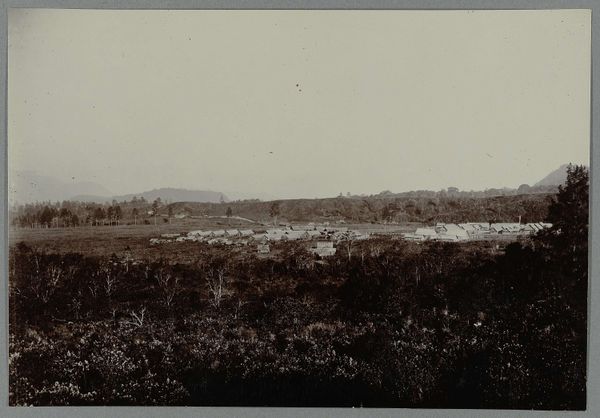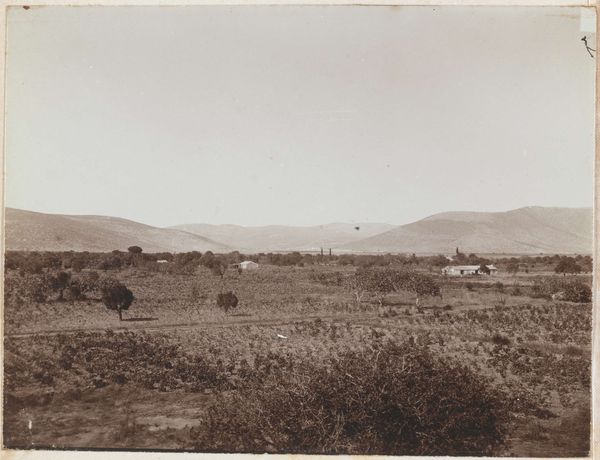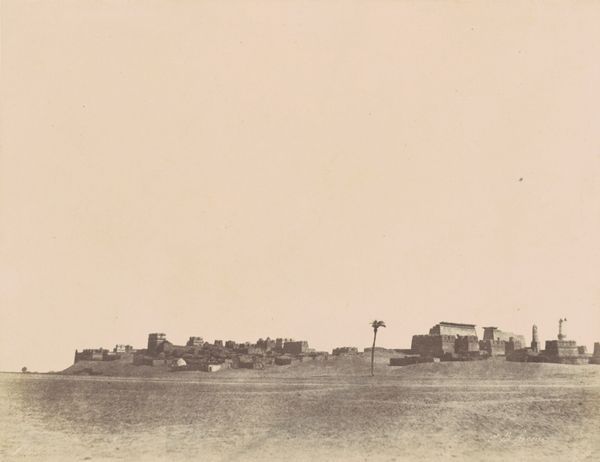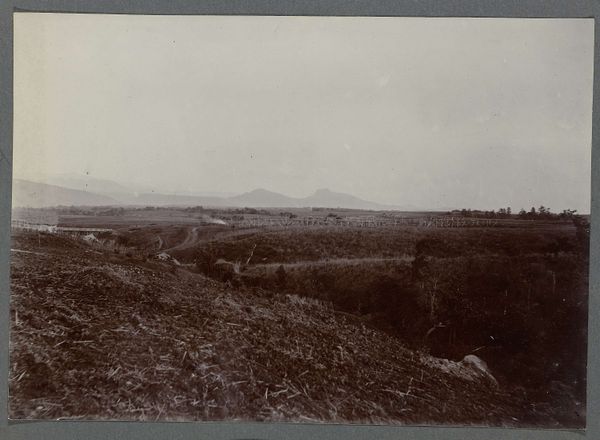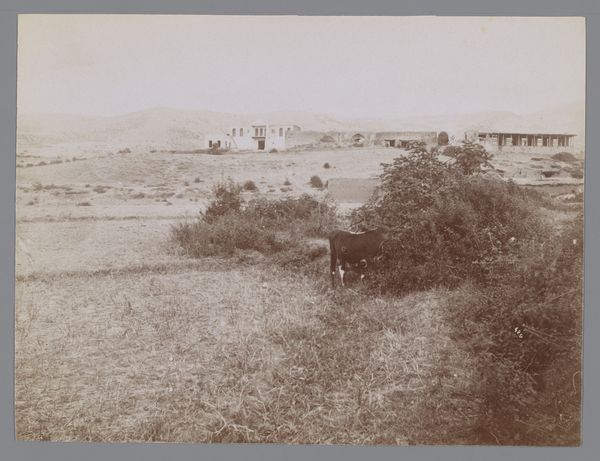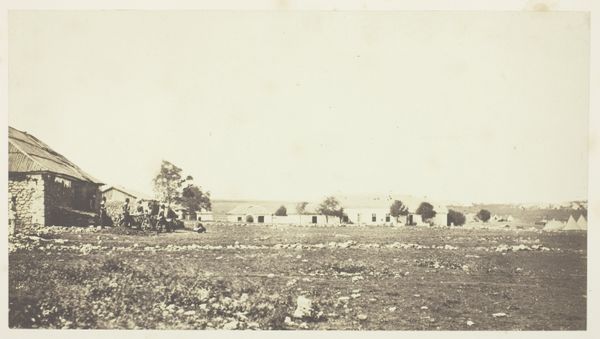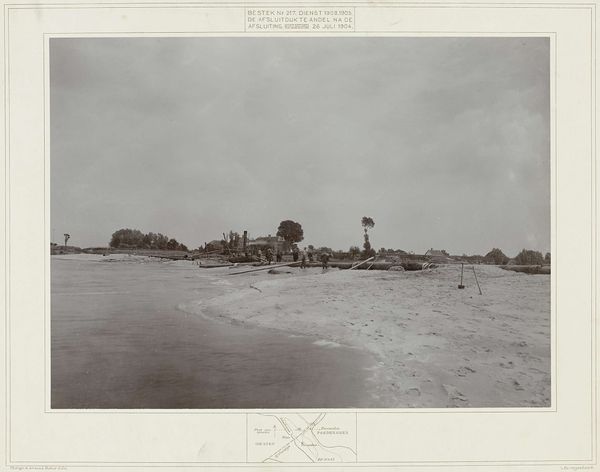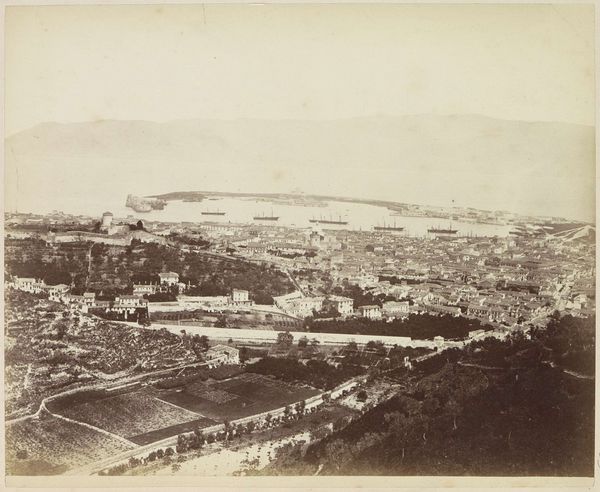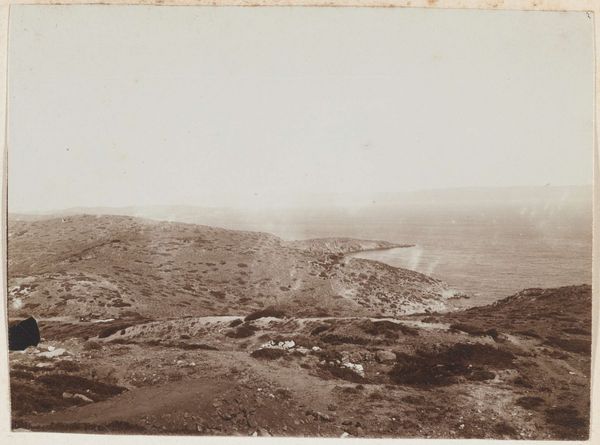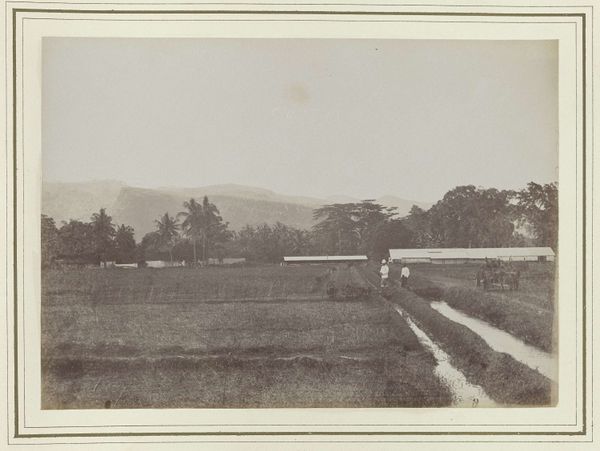
photography, gelatin-silver-print
#
landscape
#
photography
#
historical photography
#
gelatin-silver-print
#
19th century
Dimensions: height 150 mm, width 210 mm
Copyright: Rijks Museum: Open Domain
Curator: This is "Veld en schuren" or "Field and Sheds," a gelatin-silver print taken in 1886 by Kassian Céphas. You can find it here at the Rijksmuseum. Editor: My first thought is of silence. There’s a stillness to this image, a quiet contemplation of the land. The tones are muted, almost melancholic, which makes the whole scene feel… timeless. Curator: Absolutely, the muted tones are typical of photographic processes in the 19th century, but beyond that, let's consider the context. Céphas worked as a photographer for the Sultan of Yogyakarta. How does the very act of creating a photograph depicting, seemingly, just the rural environment surrounding Yogyakarta potentially serve colonial or dynastic interests? Who is excluded in this view of nature? Editor: An important point about exclusion, but on a simpler note: the eye is drawn to the buildings, but they almost blend into the background. The strong foreground, this dusty path, it really centers the perspective. Curator: And it emphasizes access, or lack thereof. The framing and angle position the viewer outside, on the periphery of this cultivated space. Are we allowed to traverse that path, or is our access being intentionally controlled through the act of its photographic representation? What kind of labour is tied to this view and to whom does it belong? Editor: I hadn’t considered the implicit social commentary there. I was more absorbed in how the composition makes it so accessible. You feel like you could simply step into that landscape. The use of light is particularly striking, guiding your eye through the field and up to those distant sheds. It feels very deliberate. Curator: Of course! And those compositional choices can both depict and shape specific power dynamics, reflecting not only the literal landscape but also the socio-political landscape of the time. By turning our attention towards those buildings in the landscape, the photo normalizes particular labor dynamics on a societal scale. Editor: It's funny, isn't it? A simple landscape reveals so much, when viewed through the correct lens, pardon the pun. Curator: Exactly, this print urges us to look past the immediate aesthetic and consider the structures of power embedded within the image, while simultaneously examining the photograph as an agent of those power dynamics.
Comments
No comments
Be the first to comment and join the conversation on the ultimate creative platform.
